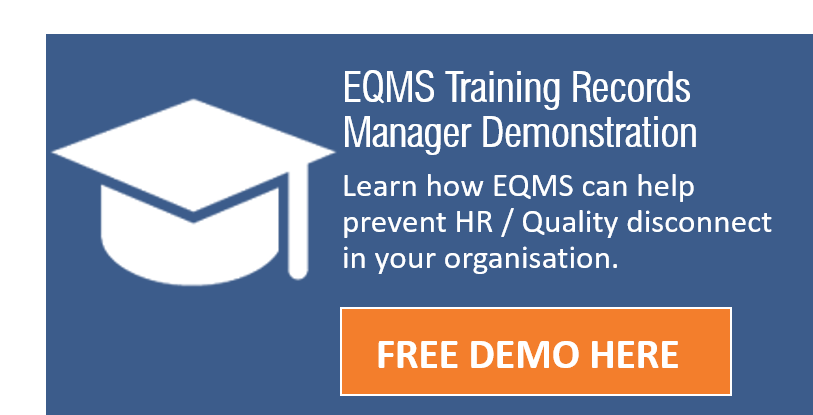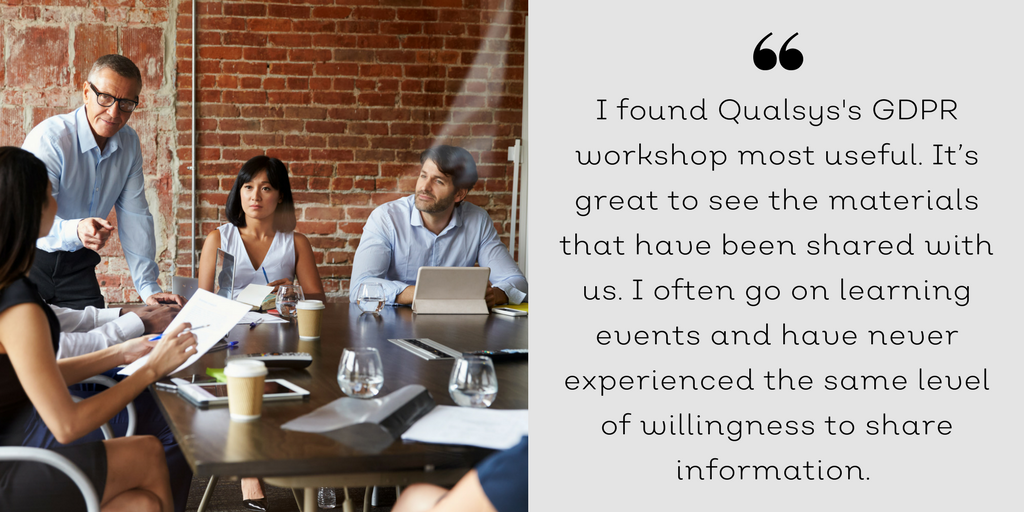Want to contribute to this article?
Is your organisation suffering from HR-Quality disconnect?
Common side effects include: outdated training records, lack of communication between departments, frustrated employees, time-heavy manual processes, and a high risk of employees not having the latest training requirements.
We've talked to many quality professionals who feel this disconnect. But if HR control the training records and you control the quality management system, how can you ensure their processes meet the requirements of ISO 9001:2015?
Clause 7.2 'Competence' requires organisations to determine the competency requirements for those people performing work under its control. Once these competence requirements have been determined, the organisation must then ensure that those people possess the necessary competencies. The organisation is required to take action to acquire the necessary competence. Actions taken need to be evaluated for effectiveness.
So how do you solve this disconnect between departments? Below are 8 questions you should ask for a more integrated training record management system.
#1 Does The Organisation Have The Required Competence?
ISO 9001:2015 defines competence as "the ability to apply knowledge and skills to achieve intended results." This means ensuring that employees not only have the knowledge, but are able to apply it to ensure the objectives of the organisation are reached. For example, this may mean that during the on-boarding process that all pre-employment checks are completed using up-to-date forms, arranging and conducting required training, and job role definitions are time-consuming - but necessary.
Using an EQMS system means documentation can be held in one hub for easy access, while training can be booked and managed with ease. A workforce that is increasingly familiar with digital processes is likely to be receptive to a cloud-based GRC system, too, rather than working from paper.

#2 How Do We Identify Knowledge Gaps?
If a skills gap is identified, the organisation is required to take action to address any competency issues, and even check that this action has been effective.
A comprehensive training records management system will enable HR managers to have a real-time overview of current knowledge gaps in the company. This is ideal for three reasons:
- Identifying common knowledge gaps means training can be block-booked to save time and money
- Risk is reduced by ensuring all staff are trained to appropriate levels at all times
- Skills gap analysis can be easily delivered when assessing requirements for a recruitment process, to efficiently recruit new staff with a broader skill set.

#3 How Do We Control Training Documentation?
ISO 9001:2015 Clause 7.2.5 requires documented information as evidence of competence. This means records of education, training, skills and experience must be documented. A suitable EQMS system will enable individuals to access and update their own training records (if you want - or HR representatives can be responsible with further controls). The ability to upload documentation such as certificates to confirm training and skills is an ideal feature for ISO 9001:2015 compliance.
It's not just training documentation that benefits from controls, either. When all documents are held in a central hub, version control means HR Managers can ensure only the latest policies, processes, and forms are in use. When important updates are made to a document, individuals or groups can be made to acknowledge that they have read the new version. This immediately shifts responsibility from HR to the individual, which in turn reduces the risk of future litigation from (ex)employees.

#4 How Do We Keep Confidential Employee Information Secure?
These days, people are more wary about data held about them by any organisation – including the one they work for. Boost trust with digital personnel files: with a document management system individuals can access records held on them at any time, without compromising data security.

If your organisation is (or is striving towards) ISO 27001 accredited, you'll understand the importance of data security. The Standard is designed to maintain strict controls over data - without restricting access where it would hinder business operations. A system such as EQMS Training Manager or Document Manager can be restricted by individual permissions, meaning users can only access files that you give them access to. This feature is perfect for any organisation wishing to provide individuals clarity over information held on them without compromising on data security compliance.
#5 Can Employees Access Critical HR Policy Documents?
Hosting critical HR policies and procedures in one central hub means users can access them at any time - without the need to pester the HR department. This means happier staff as they can find the answers they need instantly, and a positive and more efficient HR department as time spent on common questions is slashed.
What if you have remote or mobile workers in your organisation? A document management system that is based in the Cloud enables people to access any HR policy documentation at any time, from any location. This is especially helpful if your organisation has a remote workforce, or people who are often out of the office but need access to these documents.
When using a quality management system for ISO 9001:2015 compliance, you'll need to consider whether your procedures are up-to-date and accessible by all relevant parties. EQMS Document Manager is an example of how change logs and read receipts of critical documents ensure full compliance and allow for easy audits.
#6 How Does Employee Training Change To Prevent Issues Recurring?
One vital aspect of HR is ensuring that the workplace is a safe environment. That’s tricky on even a small site, but if you have multiple sites or your organisation employs home or mobile workers if becomes a nightmare to handle.
Untrained staff and knowledge gaps raise the risk of accidents in the workplace, or problems which affect the quality of product or service output. A system that allows for risk management to be the responsibility of ALL staff means new hazards and potential risks can be immediately addressed, and preventative actions could include implementing further staff training.
A GRC system can allow anyone to raise risks as they spot them, which triggers an automated workflow for action. While this often falls to the quality team, many actions will also be the responsibility of HR. By implementing such a system, it will promote inter-departmental communications and increased awareness of individual responsibilities to workplace safety.
The Next Step To Solving The HR/Quality Disconnect
Integrated quality management software for HR will provide several benefits to improving processes and reducing risk, including:
- Full training record management with overviews and drill-down reporting for knowledge gap analysis
- Requirement to acknowledge receipt of essential policy documents to reduce risk of liability
- A single source of truth for all policy documents
- Permissions restrictions for greater data security and information distribution
- A reduction in time demands on the HR team - common policy and procedure questions held in one easy access place instead
For more information about how EQMS can help solve the HR/Quality disconnect, request a demonstration of EQMS Training Records Manager here.









Share your thoughts on this article